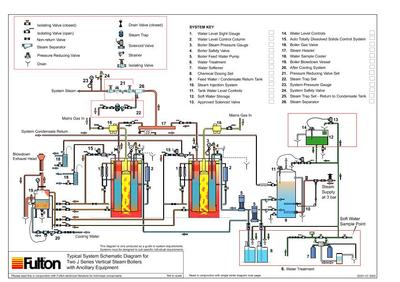Marine Steam Boilers J H Milton Pdf
Marine steam boilers. [J H Milton] Home. WorldCat Home About WorldCat Help. Search for Library Items Search for Lists Search for Contacts Search for a.
The Johnson boiler is a used for ship propulsion. The Johnson design was developed by the British engineer J. Johnson in the late 1920s. A patent was granted in 1931, and one of these boilers was installed in the. This was a time when water-tube boilers were being adopted in fast ships, such as naval warships and passenger liners. There was also a shift to rather than burning.
Oil had several advantages for a fast ship, particularly a warship that needed to combine both efficiency for long range with the ability to generate high power on demand when full speed was needed. Oil required fewer, and a smaller crew required less space aboard given over to mess spaces. Refuelling was also quicker and cleaner with oil than with coal. The Johnson boiler was the first of the, a class of water-tube boilers characterised by single and vertically above each other, with curved vertical water tubes to the sides forming an overall cylindrical volume. There is no grate at the base of this furnace space, so they are fired by liquid burners, rather than a solid fuel furnace producing. The large radiant heating area available allows a combustion rate, for a given furnace volume, of around twice that for a contemporary boiler, such as the. The end walls of the furnace may be either water walls with more tubes, or else simple firebrick.
The small amount of brickwork for the Johnson design, without requiring a furnace base, was seen as an advantage by the Navy. The Royal Navy trialled a Johnson boiler in 1936, when the was built with two and a Johnson, rather than the three Admiralties used for the rest of the class. This boiler had a water wall at the non-firing end. The initial design had poor circulation until external cold downcomers were added, increasing the weight by 10%. Babcock-Johnson boilers [ ]. And her sister ship, were both four-funnelled liners refitted in 1937 with Babcock-Johnson boilers and only two funnels The Babcock-Johnson is the developed form of the Johnson design, constructed.
Atapi ihas122 e ata device driver windows 7 64. Atapi Ihas122 Ata Device 1.1271.11.1 For Windows 10 all_drivers-1.1271.11.1.exe 20kb HP PS233AA-ABF m1255.f, Toshiba Dynabook Qosmio D710/T5BB, Lenovo 6458V35, Gateway M-7343U, HP Presario R3000, HP HP Pavilion g7 Notebook PC, and more.
The end walls of the furnace are tube-walled and there are large external. The boiler and its exhaust uptake is enclosed in an overall downward air duct, supplied through an air preheater in the exhaust stack. Early versions of this design used a thick tube nest, split into two layers and with the placed as axially-parallel tubes between these. Later designs had thinner tube nests of only four rows of tubes, with the superheater placed in the uptake to the funnel. Working conditions would be '850/850', with a working pressure of 850 pounds per square inch (59 bar) and a steam temperature of 850 °F (454 °C). The superheater would be placed in one side of the uptake, with a between the high and low pressure turbines placed in the other. Fairfield-Johnson boilers [ ] The Fairfield-Johnson boiler is a further development of the Babcock-Johnson type.
Leonid Ulitsky wrote: > > po-russki. S razvitiem nauchno technichskogo progressa, ya dumayu chto s > chteniem problem uzhe > net, a vot pisat' navernoe mogut ne vse, a hotyat-to tochno ne vse: Ya vot. Arabskij shrift russkij.
